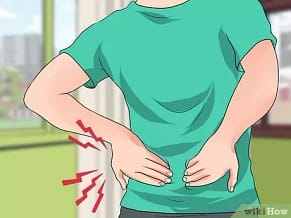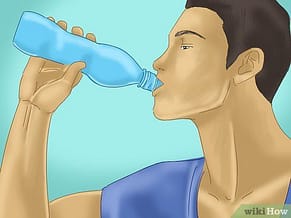Kidney stone
A kidney stone, also known as a renal calculus or nephrolith, is a solid piece of material that forms in the kidney from substances in the urine. The stones can vary in size from as small as a grain of sand to as large as a golf ball.
Kidney stones are made up of various compounds, such as calcium oxalate, uric acid, and struvite. Calcium oxalate is the most common type.

Symptoms of kidney stones can include severe pain in the back, side, lower abdomen, or groin, nausea and vomiting, blood in the urine, and the need to urinate frequently or urgently. However, some people with kidney stones may not have any symptoms at all.
Treatment options for kidney stones include drinking plenty of water to help flush out the stone, pain medication to help control discomfort, and, in some cases, medication to help break up the stone so it can be passed more easily. In severe cases, surgery may be necessary to remove the stone. Preventive measures include drinking enough water, eating a healthy diet low in salt and animal protein, and managing chronic conditions such as high blood pressure, gout, and obesity. If you suspect you have a kidney stone, it’s best to visit a doctor to get a proper diagnosis and treatment plan.
Signs of kidney stones
Kidney stones can cause a variety of symptoms, and the severity of these symptoms can vary depending on the size and location of the stones. Some common signs and symptoms of kidney stones include:
- Severe pain in the back, side, or lower abdomen: This is often the most intense pain someone will experience in their life. It can come in waves and vary in power.
- Blood in the urine: This can cause the urine to appear pink, red, or brown.
- Nausea and vomiting: These symptoms can occur as a result of the pain caused by kidney stones.
- Frequent urination or a strong urge to urinate can occur as the body tries to flush out kidney stones.
- Cloudy or strong-smelling urine: This can occur as a result of the presence of kidney stones in the urinary tract.
-Fever and chills, may be caused by urinary tract infection caused by the stone, which can be a sign of complication.
- Some people may not experience any symptoms, and kidney stones may be discovered during an imaging test or urine test for another reason.
It is important to note that these symptoms can also be caused by other conditions, such as urinary tract infections or diverticulitis.
Also, the pain of kidney stones is intense, so do not hesitate to seek medical attention. You might need emergency medical care in severe cases if the stones block urine flow completely.
Kidney stones causes
There are several potential causes of kidney stones, including:
- Dehydration: When you’re dehydrated, your urine becomes concentrated, which can lead to the formation of crystals. These crystals can eventually form into stones.
- Diet: A diet that is high in certain types of minerals, such as calcium and oxalate, can increase your risk of developing kidney stones. Consuming a diet high in salt can also be a risk factor.
- Inherited metabolic disorders: Some people are born with conditions that increase their risk of developing kidney stones, such as hypercalciuria (too much calcium in the urine) or hyperoxaluria (too much oxalate in the urine).
- Medical conditions: Certain medical conditions can increase your risk of kidney stones, such as inflammatory bowel disease, gout, or a genetic disorder called cystinuria.
- Medications: Certain medications, such as diuretics, can increase your risk of developing kidney stones.
- struction: Sometimes, the urinary tract can become blocked due to a structural problem or an enlarged prostate, which can lead to the formation of stones.
It is important to know that it may happen from multiple factors at the same time and can vary from individual to individual. It is always good to have an evaluation with a medical professional to identify the underlying cause.
Kidney stone pain
Kidney stones can cause severe pain, as the stones move through the urinary tract. The pain can be felt in the lower back, side, or lower abdomen, and can radiate to the groin. Other symptoms of kidney stones include blood in the urine, nausea, vomiting, and frequent urination.
The pain caused by kidney stones can be described as a sharp, cramping pain in the back and side, often moving to the lower abdomen and groin. The pain can be intense and can come in waves, with each wave lasting for 20 to 60 minutes. People with kidney stones also may feel the urge to urinate more often or urgently than usual, even if little or no urine comes out. Other symptoms can be cloudy, dark, blood-tinged, or strong-smelling urine. Some people can even have fever or chills.
Treatment for kidney stones typically involves drinking plenty of water to help pass the stone, and pain medication to help manage the pain. In some cases, medication or surgery may be necessary to remove the stone if it is too large to pass on its own or cause obstruction. If you suspect you have a kidney stone, it’s best to see a doctor as soon as possible, they will help you confirm the diagnosis and discuss the best treatment options for you.
Kidney stones treatment
Treatment for kidney stones depends on the size and location of the stone and the individual’s overall health. For smaller stones, treatment may include:

- Drinking plenty of water: This can help flush out the stones and reduce the risk of infection.
- Pain relief: Over-the-counter pain relievers such as ibuprofen or acetaminophen can be used to help manage pain.
- Waiting for the stone to pass: If the stone is small enough and in a location that allows it to pass on its own, a healthcare provider may recommend just taking pain medication and waiting for the stone to pass.
- Extracorporeal shock wave lithotripsy (ESWL): A non-invasive procedure that uses sound waves to break up stones into smaller pieces that can be passed more easily.
- Ureteroscopy: A procedure in which a small telescope is inserted through the urethra and into the bladder to locate and remove the stone.
- Percutaneous nephrolithotomy: A procedure that uses a small incision in the back and a thin tube to remove the stone. This procedure is typically used for larger stones.
If an infection is present or the stones are blocking urine flow, more invasive surgery may be required.
Treatment may also include preventing the kidney stones from recurring which include the following steps: -increase the water intake to decrease the concentration of crystals in urine -change the diet to limit the intake of salt, sugar, and oxalates -if the stones are caused by a metabolic disorder, medication may be prescribed
It is important to consult with a healthcare provider for an individualized treatment plan.



.jpeg)



